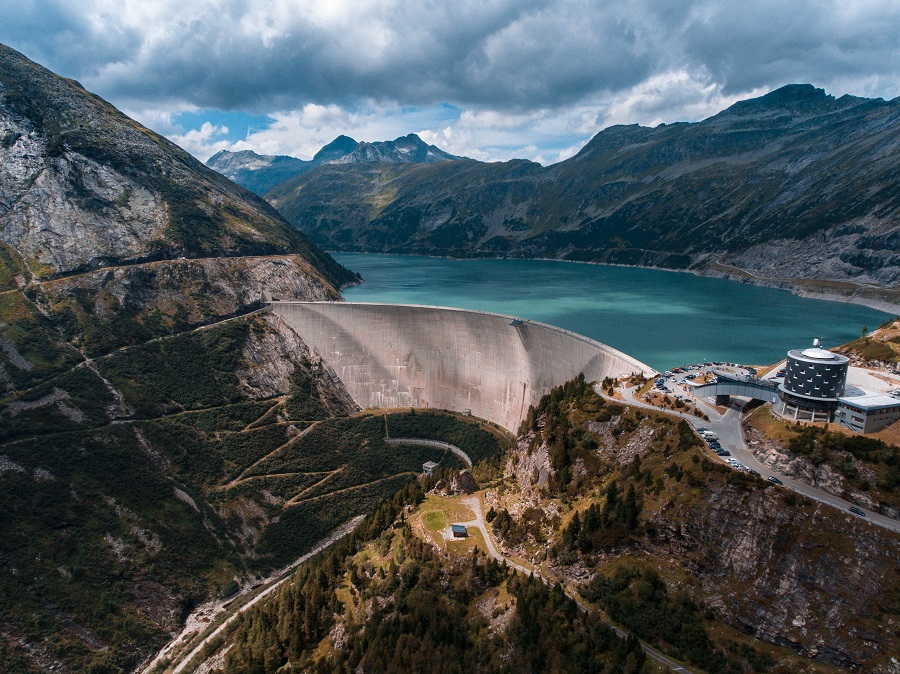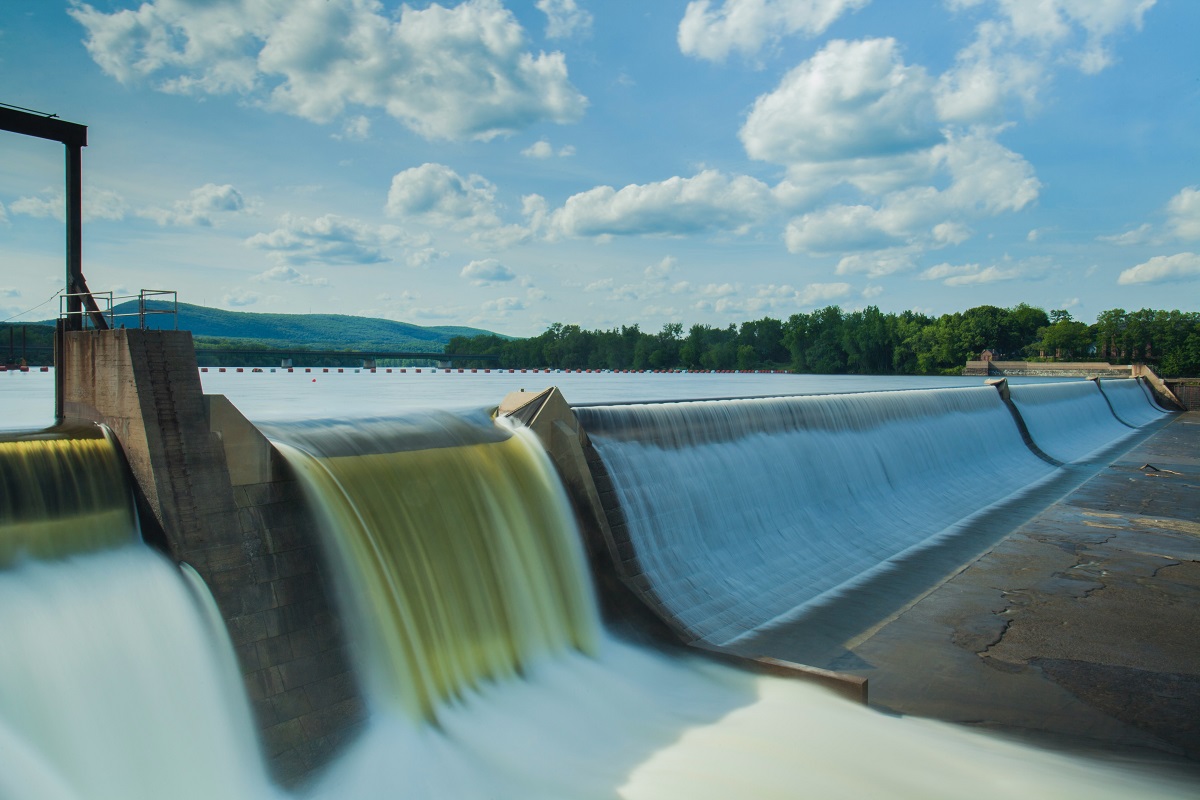Perhaps the most essential resource for all human industries around the world is electricity. Renewable and sustainable energy sources are crucial as worries about climate change and resource conservation grow. A popular renewable energy source is hydropower. However, hydropower plants have an influence on the environment, and these changes have an impact on both people and animals. In this article, we will explore how does hydropower affect the environment?
How is hydroelectricity produced?
Hydropower creates energy by using water that is either stored in dams or flowing through rivers. Turbine blades are spun by water flowing over dams, starting massive power plants. The mechanical energy is subsequently transformed into electricity by the hydroelectric generators.
The history
Between 202 BC and 9 AD in China, the Han Dynasty is when water was first used to generate electricity. Trip hammers are driven by a vertical water wheel here. Grain was then reduced to a pulp using trip hammers. Ancient Chinese were also known to crush ore and use the force of water to aid in the production of paper.
Many of the most important advancements in hydropower occurred in the 19th century. In 1827, French engineer Benoit Fourneyron created a turbine that was capable of producing 6 horsepower.
Viktor Kaplan later developed the Kaplan Turbine following the turn of the 20th century. The Austrian professor developed a turbine in 1913 that was made out of a propeller with movable blades.
Therefore, as the value and dependability of hydropower spread, technology started to advance quickly. The history of hydroelectricity was well started even at this early time.
Fast forward to today, innovation is at an all-time high, and we have tapped into solar and wind to energy production, but hydroelectricity remains the most dominant in the United States, China, South America, Africa, and some parts of Europe in total electricity production.

The pros of hydroelectricity
Around 18% of the world’s electricity is produced via hydropower. Additionally, it supplies 60% of the world’s capacity for renewable power. In Latin America, there are still abundant untapped hydro resources.
The world’s greatest hydroelectricity generator is China. At least 17% of the electrical energy in the United States is generated by hydropower facilities, with the majority coming from fossil fuels and nuclear power plants. The reasons why hydropower has become more well-liked as a sustainable energy source are highlighted below.
Cuts carbon pollution
The National Hydropower Organization of the United States (NHA) estimates that each year, the use of hydropower eliminates 200 million metric tons of carbon. This is equivalent to 38 million passenger vehicles’ worth of carbon emissions. The US region with the highest concentration of hydropower, the Pacific Northwest, has very low carbon emissions. Evidence shows that using hydropower to generate electricity results in cleaner air and water than using fossil fuels.
It’s sustainable
The sustainability of hydropower is arguably its most significant advantage. It makes use of water, a natural resource that is replenished by rainfall and river movement.
It’s crucial to remember that while hydropower utilizes water, it doesn’t deplete it. We do not need to be concerned about the water running out. In addition, unlike natural gas or fossil fuels, river water doesn’t need to be extracted; only the flow of the river will do. It indicates that when we source water for hydroelectricity, we do not produce any emissions.

Cut down fossil fuel usage
Hydropower allows us to use far less nonrenewable fossil fuels. Electricity used in Brazil and Paraguay, respectively, is produced by the Itaipu Binacional hydroelectric power project in proportions of 15% and 86%, respectively. In order to produce the same amount of energy that it did in 2016, which was 103.1 million MWh, 500,000 barrels of oil per day would be required.
How does hydropower affect the environment?
Hydropower provides environmental advantages as well as drawbacks when used to produce energy. Compared to using fossil fuels, hydropower generates cleaner energy. However, the environment in the dam region may become unbalanced due to its intensive usage of water and land.
Each of the four types of related natural habitats is impacted by hydropower facilities. These include the dam, the downstream, the reservoir, and the estuary. Here are some ways that hydropower affects our environment.
Dams require large areas of land
The majority of hydroelectric power facilities have a dam and reservoir, both of which occupy considerable areas of land. There are occasions when ideal locations for hydroelectric plants encompass residences, significant natural regions, farmland, or historic sites. Around the dam region, the environment’s physical look is significantly changed.
Because it requires so many resources, building surface reservoirs is becoming less popular in the US.
They disrupt marine life and river systems
Large hydropower plant construction typically entails changing the way rivers flow naturally. It frequently prevents rivers from flowing naturally and obstructs fish migratory paths. Therefore, preventing fish migration will eventually cause fish populations to decline. Fish population declines have severe effects on both the stability of the marine ecosystem and the availability of food for humans.
Additionally, some fish that travel through the turbines are killed. The Energy Information Administration estimates that the best turbines now in use cause 5 to 10% of fish deaths.
The US Department of Energy is aiming to create turbines that can lower fish mortality to under 2%.
However, as marine life currently faces an environmental crisis due to plastic pollution and chemical poisoning, the ideal turbine fatality rate would be zero percent.

Not 100% emission-free
The production of hydroelectricity is not entirely emission-free. Studies have revealed that the reservoirs made by river dams release greenhouse gases. Decomposing organic matter in the reservoir water, such as dead plants and other organic matter, releases carbon dioxide and methane, two potent greenhouse gases.
The heating and cooling systems necessary to maintain the hydroelectric equipment can also produce emissions. Depending on the geography and the precise location, a hydroelectric reservoir’s emissions of greenhouse gases may vary.
We can make hydropower more eco-friendly
The good news is that hydropower systems can be made more ecologically friendly. Improved land-use planning in river basins upstream of dams is one such tactic. By preserving the surrounding ecosystem in a river’s watershed, erosion may be better controlled. As a result, there will be less decomposing organic matter in the water, which will help reduce greenhouse gas pollution from reservoirs.
Additionally, efforts are being undertaken to lessen the effects of hydropower on fish habitats and migration patterns. When transporting fish beyond a dam, several hydroelectric plants employ trap-and-haul systems to gather the fish. To fire migratory fish over a dam, the Department of Energy (DOE) has recently funded research and development on “salmon cannons.” For many sites, more meticulous planning of dam placement to prevent disruption of the most significant migratory routes would be a more long-term, sustainable option. In certain circumstances, dismantling existing dams and allowing river flow to become closer to its natural condition results in fish habitat restoration.
In conclusion
Hydroelectric power plants dominate the electric energy industry, and although they’re not going away soon, they need some reinvention. We know it has pros and cons, but how does hydropower affect the environment?
In contrast to fossil fuel-powered facilities, hydropower plants do not release the waste heat and gases that are significant contributors to acid rain, global warming, and air pollution.
However, with their size and the effects on aquatic life, it’s important to note that hydropower plants can have some negative impacts on the environment.
Tidal power and wave energy, two continually developing water-based energy sources, often leave less of an environmental imprint than conventional storage hydropower plants.
Like this article? Click here to check out some fun facts about hydropower that will blow your mind!

